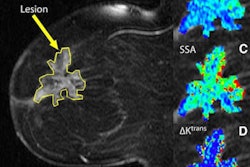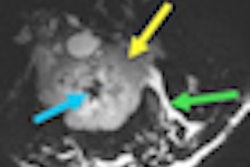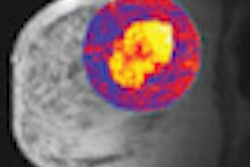Mammography and breast self-exams remain important tools for detecting breast cancer, even among women ages 40 to 49 -- for whom routine mammography has been questioned by the U.S. Preventive Services Task Force (USPSTF), according to a study to be presented this week at the American Society of Clinical Oncology (ASCO) Breast Cancer Symposium in San Francisco.
Researchers from St. Mary's Comprehensive Breast Center at the Lacks Cancer Center in Grand Rapids, MI, found that both screening mammography and breast self-exams have value in detecting cancer in women younger than 50. In addition, these women were more likely to have advanced-stage cancer that required mastectomy, making breast self-examination an important tool.
Dr. Jamie Caughran and colleagues analyzed diagnosis data compiled from a statewide registry from 14 institutions through the Michigan Breast Oncology Quality Initiative; the study included data from 5,903 women between 2006 and 2009. The aim of the study was to assess how the 2009 USPSTF breast cancer screening recommendations might affect future breast cancer detection, especially for women between the ages of 40 and 49.
The USPSTF's 2009 guidelines actually recommended against teaching breast self-examination, citing a high number of benign biopsies performed after palpable breast masses are found. However, this advice conflicts with established approaches that include annual screening mammograms for younger women and also encourage regular self-exams.
Caughran's team found that in the overall cohort, 65.5% of the breast cancers assessed in the study were detected by mammography, 29.8% by palpation, and 4.7% by other methods. Eighty-one percent of women whose tumors were found by mammography were older than 50; of women whose tumors were found by palpation, 40% were younger than 50. In women younger than 50, annual mammography and breast self-exam were comparable, with mammography finding 48.3% of cancers and palpation identifying 46.1%.
Women with palpable tumors had more advanced cancers: 50% and 17% at stages II and III, respectively, compared with 18% and 4% detected at mammography. Caughran's group found that women whose tumors were discovered through palpation were more likely to have mastectomies (46%) than those whose tumors were found by mammography (27%), and they were also more likely to undergo chemotherapy (22.7% compared to 15.7%).
"Results of this study validate the importance of annual screening mammography in women older than 50 years, and [in] women aged 40 to 49 years recently omitted from screening guidelines," Caughran and colleagues wrote. "If screening mammography is omitted in this group [of younger women], cancers when detected may be of a more advanced stage and result in more mastectomies."
Breast self-exam is key to women's health, Caughran said in a statement.
"While there has been ongoing debate about when and how breast cancer screening should occur, this study validates that women who undergo regular mammography screening present at earlier stages and often require less aggressive treatment than those who do not," she said. "This is true for women older than 50 years, as well as women aged 40 to 49 years for whom routine mammography is questioned by the USPSTF. In addition, women of all ages presented with palpable tumors, highlighting the use of self-breast exam as an important public health measure."




















